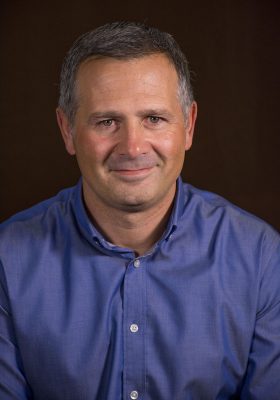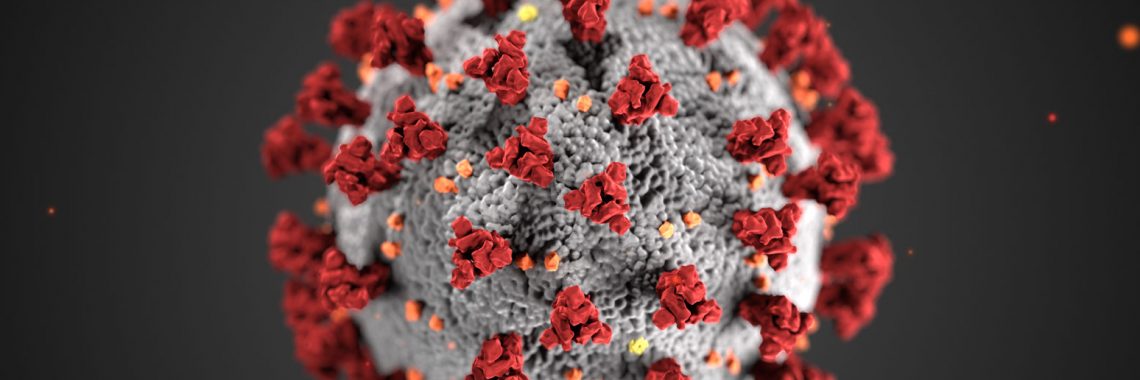
University of Wyoming scientists will use an $800,000 grant from the Wyoming Department of Public Health to test effluent from Wyoming communities for SARS-CoV-2, the virus that causes COVID-19.
The testing could show disease trends and even predict outbreaks days before they can be identified by other types of testing.
Bledar Bisha in the Department of Animal Science and Sara Collins in the Department of Zoology and Physiology are collaborating to test samples from up to 100 sites several times a week once the project is running.
More than 7,000 samples over the course of one year will be tested in Bisha’s laboratory in animal science and half in the Wyoming Public Health Laboratory (WPHL) in Cheyenne, said Bisha, associate professor and interim head of the department.
Bisha and Collins have other ongoing collaborations on water projects, especially focusing on understanding sources of microbial contamination of recreational water bodies in Wyoming.
“This has a different feel from everything else we do,” he said. “We feel the sense of urgency here, so we are really happy to be able to provide at least some help in the fight against the disease in the state.”
The virus typically spreads via larger droplets generated by individuals in close contact when they breathe, talk or sneeze, but evidence has mounted supporting airborne transmission via aerosols, said Bisha.
COVID-19 is thought of as a respiratory illness, but the receptors to which the virus attaches are also present in the gastrointestinal tract, he said. Those infected with the virus shed the virus through feces.
“So that’s why we look in wastewater,” he said. “But the interesting thing about looking at wastewater is that you’re likely to catch both symptomatic and asymptomatic cases because the disease is transmitted by those who are asymptomatic but sometimes clinical testing won’t pick up those cases.”
The process can indicate whether there is a trend of increasing positive samples as well as higher virus quantities, which could indicate if the disease is spiking in a community. The testing cannot determine number of cases, even though at least semi-quantitative predictions of cases can be made using the current methodology, he said.
“The tool can’t be fully quantitative, but it’s fairly useful if you use it to assess trends,” said Bisha. “Where this tool has been used in the past it’s been possible to assess an outbreak at least a week before clinical cases started to appear.”
The tool has been used to detect polio cases in the 1930s and more recently has been employed for that in developing countries.
“It’s proved to be an effective method to look at trends of infectious disease in the past and not only infectious diseases, but even other unconventional applications, such as wastewater testing to look at opioid use in communities, for the benefit of public health,” he said.
Graduate student Alexys McGuire of Akron, Colo., will lead the project assisted by undergraduate students and a laboratory technician.
The research group is working closely with public health officials, especially Noah Hull and Wanda Manley at WPHL, and will plan to share the COVID-19 data, said Bisha. Samples will be taken before the influent enters a wastewater treatment facility.
McGuire’s group will use polymerase chain reaction (PCR) testing to detect gene sequences unique to the virus.
“The best way to do this is to try to concentrate the viral nucleic acids, which in the case of this virus is RNA, not DNA,” said Bisha. “You are extracting the target RNA that is indicative of the virus and then you purify that and run the PCR, making many, many copies (millions), and you’re detecting them in real time.”
The testing does not replicate the virus, only the target RNA.
COVID-19 mutations would not change testing effectiveness, said Bisha.
“The genes are very, very important genes for survival, important for the attachment to the target cells, so they are not likely to mutate,” he said.
There is much to be done on the research front, said Bisha.
“But it’s also a great service to the state, so we feel excited to provide yet another tool to monitor the prevalence of the SARS-CoV-2 in our communities and help in the greater effort to curtail the outbreaks of SARS-CoV-2,” he said.





